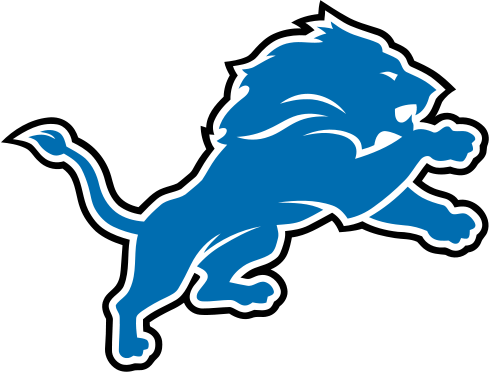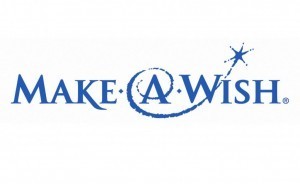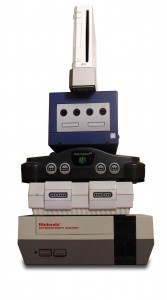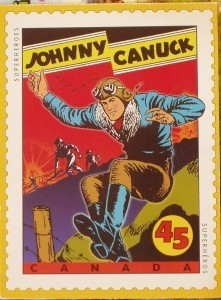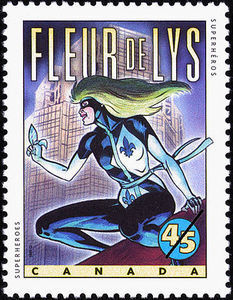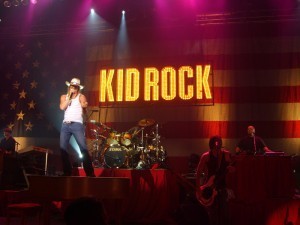Bathroom Readers' Institute's Blog, page 160
September 27, 2013
How did Google Get its Name? Happy 15th Birthday Google!
 Happy 15th birthday Google!
Happy 15th birthday Google!
It seems that anything you do online has the word Google attached to it today. Our online lives are filled with Gmail, Google Docs, Google Plus, Google Maps, Google Earth, Youtube, Piacasa, and most importantly, Google Search! So, how did Google get its name? Here is an piece from Uncle John’s Top Secret Bathroom Reader for Kids Only!
In 1998 Sergey Brin and Larry Page were looking for money to help start their company, so they boasted to investors that their new search engine could find a googol pieces of information, which is the word for the numeral “1″ followed by 100 zeroes. One investor liked them, and immediately wrote a check made out to “Google.” The name stuck.
So, next time you “Google” something, remember that you could have been “Googoling” it. Hey…that kind of has a nice ring to it.
How is Google celebrating?
1. They are having a Piñata party on their home page. Head on over and take a few whacks.
2. Type “Google in 1998” and see how the search engine looked 15 years ago. (Here are a few more Google Easter Eggs).
September 26, 2013
Restaurant Firsts
We’re becoming more and more of a restaurant culture.
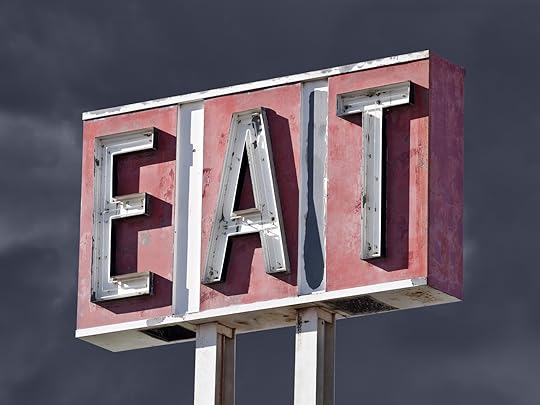 First restaurant to note GMOs: In 2013, the Mexican fast-food chain Chipotle became the first chain to adopt a policy to note on its menu what of its ingredients were of “genetically modified origin.” The only ingredient, so far: soybean oil, used to cook meat.
First restaurant to note GMOs: In 2013, the Mexican fast-food chain Chipotle became the first chain to adopt a policy to note on its menu what of its ingredients were of “genetically modified origin.” The only ingredient, so far: soybean oil, used to cook meat.
First green salad: The prime rib restaurant Lawry’s opened in Beverly Hills in 1938. One of the their hallmarks was, and still is, tableside service—an employee wheels a cart to your table and carves off a slab of prime rib (as that was once the only entrée offered). But before the meal, another employee wheels another cart around, table to table, and tosses fresh green salads for guests. Included in the price of the meal, this was the first time an American restaurant offered a salad course.
First restaurant to accept bitcoin: “Bitcoin” is an electronic currency, invented in 2010 by Satoshi Nakamoto, used exclusively over the Internet. And now, at least one place in the “real world.” In 2013, Bubba’s Firehouse Barbecue in Salt Lake City, Utah, started accepting bitcoin as a form of payment. (The owner is a big fan and online user of bitcoin.)
First fast food restaurant: In the early 20th century, hamburgers were considered a low-class food—the meat was made up of second-rate slaughterhouse leftovers, ground up to mask flaws. In 1921, White Castle opened, hoping to change the perception of the hamburger as a “mystery meat” sandwich. The first store in Wichita, Kansas, allowed customers to see their burgers being prepared. The “white” in the name was no accident—the restaurant’s owners wanted to imply cleanliness. The food was served up quickly, and cheaply: burgers cost five centers apiece. And the fast-food restaurant was born.
First hotel to offer room service: The Waldorf Astoria in New York (1931).
First iPad menus: Lots of high-end restaurants present their menu to diners via an iPad. The first restaurant to do so was Nihonbashi, a restaurant in Sri Lanka. Amazingly, they began the practice just nine days after the iPad became commercially available.
September 25, 2013
We Aren’t the Champions!
A look at the teams in major sports that probably won’t be
playing for the league title this year…
LOSING STREAK: This team is a perpetual cellar-dweller. The Lions have made the playoffs just twice in the last 15 years. In 2008, they set a dubious record with a record of 0-16, the first NFL team to have a perfect imperfect season. (And the next season they went 2-14.)
ALMOST: Before the NFL and AFL merged into one league in the 1960s, the Lions won four NFL championships. But post-merger, the farthest they’ve ever got was the 1991 NFC conference title game. They were steamrolled by the Washington Redskins 41 to 10.
TEAM: Cleveland Browns
LOSING STREAK: Like the Lions, the Browns were very successful in the pre-merger days, with four NFL titles in the ‘50s and ‘60s. Ever since, the Browns have made the playoffs 11 times in 41 seasons.
ALMOST: Of those 11 postseason appearances, the Browns made it to the conference finals three times, in 1986, 1987, and 1989. All three times they were defeated by the Denver Broncos.
TEAM: Minnesota Timberwolves
LOSING STREAK: The team began play in 1989…and finished its first seven seasons with a losing record. After that, it started another streak—making the playoffs for seven straight years…and getting knocked out in the first round every time.
ALMOST: That eighth year, however, looked to be the Timberwolves’ season—they had the best record in the Western Conference and made it to the 2004 conference finals. And then they were knocked out by the Los Angeles Lakers (who used to be based in Minneapolis, where they won five NBA titles).
TEAM: Seattle Mariners.
LOSING STREAK: From its inception in 1977 through to the mid-‘90s, the Mariners had a winning season just once, and barely: 82-80 in 1993.
ALMOST: In 1995, however, Major League Baseball moved to a four-team playoff system, and the Mariners eked in as the “wild card” team. They beat the heavily favored Yankees in the first round, but lost to the Cleveland Indians in the American League finals. They were a playoff contender after that, and were heavily favored to win the World Series in 2001, when they won 116 games, the most in MLB history. Nevertheless, they were knocked out in the first round.
TEAM: Washington Nationals
LOSING STREAK: Only two Major League Baseball teams have never made it to the World Series: the Mariners, and the Washington Nationals. From 1969 to 2004, the team was based in Canada, and played as the Montreal Expos. They made the playoffs once, in 1981, but lost the National League Championship Series to the Los Angeles Dodgers.
ALMOST: The Expos were a favorite to win the 1994 World Series. That year, the team had a .649 winning percentage, and by far the best record in the league. What happened? Major League Baseball players went on strike in August 1994…which ended the season, and the cancelled the World Series.
September 24, 2013
Hockey Stars and Their Other Jobs
So Tim Horton founded Canada’s most successful franchise. Big deal—did he ever record a disco album? Here are some hockey palyers and their other jobs from the brand-new
Uncle John’s Bathroom Reader Weird Canada.
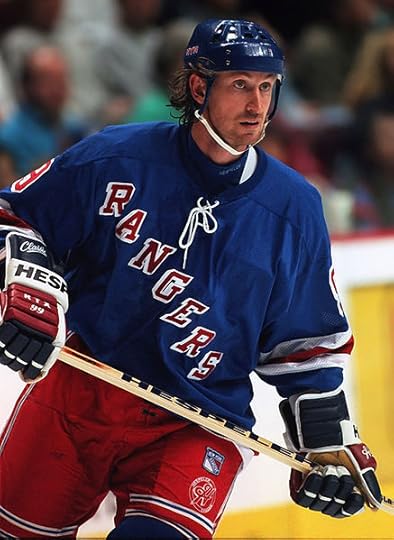 WAYNE GRETZKY. In 1991, NBC TV briefly aired ProStars, a Saturday morning cartoon starring three big sports stars of the era: Michael Jordan, Bo Jackson, and Gretzky. The cartoon versions of the sports stars had superpowers and a distinct personality, and in every episode the trio would defeat a supervillain, mad scientist, or as they did in one case, recover the stolen Stanley Cup. Gretzky, for some reason, was the jokester of the group and was obsessed with eating. The real Gretzky appeared in live-action bumpers at the beginning and end of the show—voice actor Townsend Coleman performed Gretzky’s voice in the animated sequences.
WAYNE GRETZKY. In 1991, NBC TV briefly aired ProStars, a Saturday morning cartoon starring three big sports stars of the era: Michael Jordan, Bo Jackson, and Gretzky. The cartoon versions of the sports stars had superpowers and a distinct personality, and in every episode the trio would defeat a supervillain, mad scientist, or as they did in one case, recover the stolen Stanley Cup. Gretzky, for some reason, was the jokester of the group and was obsessed with eating. The real Gretzky appeared in live-action bumpers at the beginning and end of the show—voice actor Townsend Coleman performed Gretzky’s voice in the animated sequences.
GUY LAFLEUER. At the height of Lafleuer’s career and popularity in 1979—he’d just won four straight Stanley Cups with the Montreal Canadiens—Lafleuer recorded an album called Lafleuer. It’s where Lafleuer’s strengths and the trappings of the era collide. It’s an album of hockey-themed songs by anonymous studio musicians, as well as monologues of hockey instructional tips from LaFleuer…set to a thumping disco beat. Side one contains six songs: “Skating,” “Checking,” “Power Play,” an extended dance version of “Power Play,” “Shooting,” and “Scoring. Side two: all of the same songs, but in French.
KEN DRYDEN. For Hall of Fame goalie Ken Dryden, a storied hockey career seems to have been a secondary pursuit. Drafted in 1964, he didn’t go pro until 1970 so he could earn a history degree at Cornell University. Three years into his NHL career in 1973, he took a year off to earn a law degree (and intern for a Montreal law firm at the same time). Upon retiring in 1979, he wrote—he’s published books about hockey, Canadian history, and the Canadian educational system. And after successful turns in business, law, and serving as the president of the Toronto Maple Leafs, Dryden ran for Parliament in 2004. He represented York Centre until 2011, even making a bid at the Liberal Party’s leadership in 2006.
Do Germans Really Love David Hasselhoff?
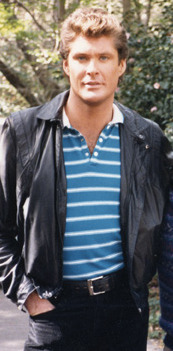 Do Germans love David Hasselhoff? Uncle John investigates.
Do Germans love David Hasselhoff? Uncle John investigates.
David Hasselhoff is a TV actor, best known for starring in two huge hit shows in the 1980s, Knight Rider and Baywatch. But while he was lighting up American TV screens, Hasselhoff had a second career—as a pop singer…in Europe. Most Americans probably first found out about Hasselhoff’s musical career during the dismantling of the Berlin Wall in Germany in 1989. Hasselhoff was present in Berlin for some reason, performing a song appropriate for the event called “Looking For Freedom.”
The reason, which quickly became clear: David Hasselhoff was hugely popular in Germany. (It was sort of like how American comedian and director Jerry Lewis isn’t highly respected at home but it is beloved in France.)
Germans, may have liked Hasselhoff, but the idea really took off because of Saturday Night Live. Norm Macdonald hosted “Weekend Update” in the early ‘90s, where he frequently made the by then washed-up Hasselhoff the butt of his jokes. “Germans love David Hasselhoff” became a catchphrase for Macdonald. And because lots of people remembered seeing Hasselhoff singing atop the remains of the Berlin Wall to throngs of cheering Germans just a few years earlier, it caught on.
But do Germans really love David Hasselhoff? There was a lot of anti-Cold War sentiment, particularly fear, in Europe in the 1980s, and pop songs reflected that. (A few examples: “99 Luftballoons” by Nena, “The Final Countdown” by Europe,” and “Everybody Wants to Rule the World” by Tears for Fears.) Hasselhoff’s song wasn’t explicitly about democracy, just the human need for freedom in general. Still, it became something of an anthem to the political change underway. A few months before the Berlin Wall fell, “Looking For Freedom” had spent eight weeks at #1 in West Germany.
But the German fascination with Hasselhoff was short-lived. His next single, “Is Everybody Happy?” hit the top 10. His next two albums, Crazy For You (1990) and David (1991) made the top 20. And for Hasselhoff, in Germany, that was it.
Austria, however, is a different story. Austrians do love David Hasselhoff, no matter what he was singing about. Back in 1985, Hasselhoff’s first album Night Rocker hit #1 in Austria. His 1987 album Lovin’ Feelings made it to #11. Crazy For You and David topped the charts. Hasselhoff has scored top-30 hits in Austria a whopping nine times. (Number of times Hasselhoff has hit the charts in the United States: zero.)
So no, Germans don’t love David Hasselhoff. At least not as much as Austrians.
September 23, 2013
Weird Beer Flavors: One Curry-Flavored Brewsky Coming Up!
With thousands of microbreweries around the world taking beer to strange new heights and creating weird beer flavors – “Pumpkin Pie”-flavored beer in particular being ubiquitous at the moment – there’s hardly such thing as “beer”-flavored beer anymore.
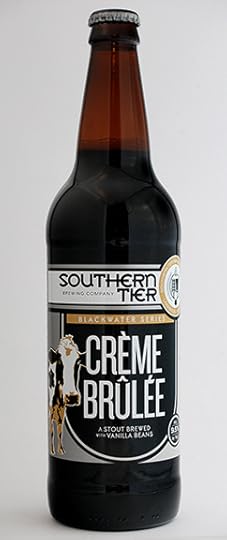 • Crème Brulee. There are dessert wines, and how there’s a dessert beer. Southern Tier Brewing in New York makes their stout with lots of vanilla, so much that they think it tastes like the classic dessert, crème brulee. The brewery suggests serving it with another classic dessert, Bananas Foster, or pouring it directly on top of ice cream.
• Crème Brulee. There are dessert wines, and how there’s a dessert beer. Southern Tier Brewing in New York makes their stout with lots of vanilla, so much that they think it tastes like the classic dessert, crème brulee. The brewery suggests serving it with another classic dessert, Bananas Foster, or pouring it directly on top of ice cream.
• Oysters. “Hog Island Sweetwater” are a particularly tasty type of oyster caught in the waters around San Francisco. Local beermaker 21st Amendement Brewery (named for the piece of legislation that repealed Prohibition) makes a stout with water that’s been used to soak the shells from those Hog Island Sweetwaters.
• Rocky Mountain Oysters. Another oyster stout? Not exactly. Wynkoop Brewing in Denver makes this one-of-a-kind beer with “Rocky Mountain oysters,” otherwise known as bull testicles.
• Avocado. Angel City Brewery in Los Angeles whipped up Avocado Ale especially for an Avocado Festival in California. Other possibly misguided flavors they’ve tried, in limited quantities, include “Dill Pickle” and “Au Jus.”
• Coconut Curry. Beer goes great with rich, coconut-milk-based Indian curries. This Hefeweizen variety from New Belgium Brewery purportedly pairs well with Indian food…because it is Indian food. It’s brewed with many of the same spices traditionally used in Indian cooking, such as coconut, cayenne, cinnamon, coriander, and lime leaf.
September 20, 2013
Uncle John’s Celebrity Shaming Department: Wish Denied
Even much-loathed celebrities like Donald Trump and Paris Hilton have gone out of their way to fulfill the request of sick or dying children who wanted to meet them. Here are the surprising stories of famous people and companies who said no to the Make-A-Wish Foundation (and other similar charities).
Garten hosts the Food Network show Barefoot Contessa, in addition to writing six bestselling cookbooks. In 2010, the Make-A-Wish Foundation contacted Garten on behalf of six-year-old leukemia patient Enzo Pereda, who wanted nothing more than to spend a few hours cooking with the celebrity chef. But Garten turned him down. In 2011, the Foundation asked Garten again. Again, she turned them down. After the news was made public, Garten apologized, and a representative said it was an oversight, and that Garten receives “100 requests a month to support charitable causes,” and can’t possibly fulfill them all. After the incident became a publicity nightmare, Garten reached out to Pereda’s family, and had suddenly found time in her busy schedule to cook with the sick child. No thanks, said Pereda and Make-A-Wish—they were working on fulfilling Enzo’s #2 wish: to swim with dolphins.
Roland Martin
Martin is the longtime host of his own fishing show, Fishing With Roland Martin. He’s also one of the biggest stars ever in competitive bass fishing, winning more than 19 tournaments and coming in second-place a record 20 times. His career winnings: more than $1 million (and a lot of giant fish). He’s a celebrity to outdoors enthusiasts, and has many fans, including a 14-year-old boy named Chris Mathis. In 1991, Mathis, who had an inoperable brain tumor, made a request through Dream Makers Inc. to spend a day bass fishing with Martin. In a first for the charity, Martin turned them down. Martin later blamed a “communications mix-up,” saying that Dream Makers contacted the wrong office (“other people make my schedule”) and someone there refused on his behalf. But Martin also told reporters that Dream Makers “considered it a personal insult that I didn’t drop my life and do everything for the kid,” which Martin later said was taken out of context. The boy went fishing with pro-bass fisher Orlando Wilson instead.
Games Workshop
Games Workshop is a British company that both makes and sells “tabletop strategy games” involving cards and dice, such as Warhammer and The Lord of the Rings—both are similar in play to Dungeons and Dragons. One kid was such a big fan of GW’s products that he reportedly asked the Make-A-Wish Foundation to arrange a visit to the company’s offices and factory in Nottingham to see how his favorite games were created. No dice, said Games Workshop. Reason: Even though individual stores are allowed to host charity events and donate to important causes, the corporate side of the company, amazingly, has a “no charity” policy.
September 19, 2013
History of Nintendo
Hiroshi Yamauchi, who ran Nintendo for more than 50 years, passed away this morning. He played a great role in bringing the game consul to the American marketing and in the creation of Super Mario, Donkey Kong and Zelda. To take a look back at his life and his role in the company, here is an overview of the history of Nintendo (Part I), first published in Uncle John’s Ahh-Inspiring Bathroom Reader.
Back in 1981, Atari was the world leader in video games. In 1983 Nintendo offered to sell Atari the licenses to their Famicom game system, but they couldn’t come to an agreement, so Nintendo decided to go it alone.
They renamed the American version the Advanced Video System (AVS) and in January 1985, introduced it at the Consumer Electronics Show in Las Vegas, one of the largest such trade shows in the world.
They didn’t get a single order.
Nintendo’s problem wasn’t so much that the AVS was a bad system, but more that the American home video game industry was struggling. After several years of impressive growth, in 1983 sales of video game consoles and cartridges suddenly collapsed without warning. Video game manufacturers, caught completely off guard, lost hundreds of millions of dollars as inventory piled up in warehouses, never to find a buyer. Atari’s loss of $536 million prompted Warner Communications to sell the company in 1984.
Mattel sold off its version, Intellivision, the same year and shut down their entire video game division. Many other companies went out of business.
GOODBYE VCS, HELLO PC
Meanwhile, computer technology had finally advanced to the point that companies were able to manufacture and sell home computers at prices that families could afford. By 1982 a computer called the Commodore 64 could be bought for as little as $200, which was $100 less than the cost of an Atari 5200.
Why buy just a game system when you could buy a whole computer— which also played video games—for the same price or lower?
Just as the video game industry had evolved from dedicated Pongonly games to cartridge-based multigame systems, game systems were giving way to the personal computer. Stand-alone video games were dead…or so most people thought.
Hiroshi Yamauchi, the president of Nintendo, didn’t see things that way. His company didn’t make personal computers and he didn’t know much about the American market. But Famicom game systems were selling like crazy in Japan, and he didn’t see any reason why they shouldn’t also sell well in the United States. So what if the company didn’t receive a single order at the Consumer Electronics Show? He told his American sales team to keep trying.
WORD GAMES
Nintendo’s American sales team was headed by Minoru Arakawa, who also happened to be Yamauchi’s son-in-law. Arakawa had to keep trying. He didn’t have any choice—he was a member of the family.
One of the problems the AVS was up against was that retailers had been badly burned by the video game crash of 1983. They weren’t about to put any more nonselling video games on their shelves. Arakawa decided that the best way to proceed was to conceal the fact that the AVS was a video game. He couldn’t do that while it was still called the Advanced Video System, so he renamed it the Nintendo Entertainment System, NES for short.
He added a light pistol and some shooting games, so that he could say it was a “target game.” (Guns and target games still sold well in toy stores.) Then he added the Robot Operating Buddy (ROB), a small plastic “robot” that interacted with a couple of the games played on the NES. “Technologically speaking,” Steven Kent writes in The Ultimate History of Video Games, “ROB offered very little play value. It was mostly a decoy designed to prove that the Famicom was not just a video game.”
DEJA VU
With a new name, a light gun, and a robot, Arakawa was sure the NES would sell. He rented a booth at the Summer Consumer Electronics Show and set the ROB out in front, where everyone could see it.
He didn’t get a single order.
Why didn’t retailers want to buy? Were consumers turned off too? Arakawa didn’t know for sure, so he set up a focus group where he could watch young boys—Nintendo’s target market— play NES games. Observing the scene from behind a two-way mirror, Arakawa heard for himself how much the kids disliked the NES. “This is sh*t!” as one kid put it.
ONE MORE TRY
Arakawa was ready to throw in the towel. He called his father-inlaw, told him the situation was hopeless, and suggested that Nintendo pull the NES out of the U.S. market. But Yamauchi refused to hear a word of it. He didn’t know much about the Consumer Electronics Show and he didn’t know much about focus groups.
One thing he did know was that the Famicom was still selling like crazy in Japan, so why couldn’t it sell well in the United States?
There was nothing wrong with the NES—he was certain of that.
Yamauchi told Arakawa to test it one more time—in New York City. This time Arakawa left nothing to chance. There were about 500 retailers in the city, and Arakawa and his staff visited every one. They made sales pitches, delivered the game systems, stocked store shelves, and set up Nintendo’s in-store displays themselves.
They made plans to spend $5 million on advertising during the Christmas shopping season, and—without permission from Yamauchi—promised retailers they would buy back any game systems that didn’t sell. And they never, ever referred to their video game as a video game. The NES was an “entertainment system.”
IS NINTENDO THE NEXT ATARI?
With the buyback guarantee, retailers had nothing to lose, so they agreed to stock Nintendo, even though they didn’t think it would sell. They were wrong—more than 50,000 games sold by Christmas, prompting many stores to continue stocking the NES after the holidays. Arakawa launched similar tests in Los Angeles, Chicago, and San Francisco. The NES sold well in each city.
In 1986 Nintendo expanded its U.S. marketing push nationwide and sold 1.8 million game consoles, and from there sales grew astronomically. They sold 5.4 million consoles in 1987 and 9.3 million in 1988. By 1990 American sales of the NES accounted for 10% of the entire U.S./Japan trade deficit.
But if there’s one thing that video game makers have learned the hard way, it’s that staying ahead in the business can be a lot harder than getting ahead. For all their successes, Nintendo has made their share of blunders, too. They clung to the NES a few years longer than they should have, on the assumption that its market dominance would allow it to keep ahead of its rivals. They were wrong.
When a rival company called Sega introduced their Genesis system in 1989, Nintendo ignored it, even though the Genesis was twice as powerful as the NES. They shouldn’t have—Genesis introduced a character called Sonic the Hedgehog, an edgy, anti-Mario character who appealed to older kids and adults the same way that Donkey Kong’s Mario had appealed only to kids. In late 1991, Nintendo introduced SuperNintendo, but it was too late. Sonic’s appeal, combined with six years of waiting for Nintendo to update their system, helped Sega get a toehold in the market…and outsell Nintendo.
SONY’S PLAYSTATION
The industry was gearing up for yet another generation of game systems—using CD-ROM disks instead of cartridges. CD-ROMs were cheaper to make and stored more than 300 times more information than a Super NES cartridge, allowing for much more sophisticated graphics.
Nintendo had no experience with CD-ROMs, so they made plans to partner with Sony Corporation to make the new system.
But there was a problem—Sony had already announced plans to introduce its own game system (Play Station), and Nintendo executives were worried about revealing Nintendo’s technological secrets to a competitor as large and powerful as Sony. So what did they do? For some reason, Nintendo waited until the day after Sony announced the partnership. Then they made an announcement of their own: they were ditching Sony and partnering with the Dutch electronics giant, Philips.
REVENGE!
Though the company had lost ground to Sega in the U.S. market, Nintendo was still the world leader in video game sales, and many Sony executives were reluctant to challenge Nintendo’s dominance.
The consensus: scrap the Play Station project because Nintendo will wipe it out. But Sony CEO Norio Ohga was so furious at being humiliated by Nintendo that he almost singlehandedly forced the company to continue work on the project.
The Sony Play Station was introduced in Japan in 1994 and in the United States in 1995. Nintendo eventually scrapped its CD-ROM–based system and introduced the Nintendo 64, yet another cartridge game system.
As we know, the saga continued with the launch of the Nintendo Wii in 2006 and the Wii U in 2012, giving the company a new leases on life and keeping the competition between Sony and Nintendo strong for another generation of players.
September 18, 2013
Canadian Superheroes
Not all superheroes fight for the “American Way.” Here is the history of some Canadian superheroes from our newest title, Uncle John’s Bathroom Reader Weird Canada .
The original Johnny Canuck appeared in newspaper editorial cartoons in the 1860s. A working-class, tall-tale hero in the mold of Paul Bunyan, he sometimes appeared as a lumberjack, at other times as a farmer or a rancher. In 1942, in answer to the war and to the comics ban, the character received a reboot and was resurrected as a Nazi-fighting aviator and secret agent by 16-year-old Leo Bulche, who got the job after a chance encounter with the owner of Dime Comics. Later still, the lumberjack version of Johnny Canuck was adopted as the logo for the Vancouver Canucks, and he occasionally makes appearances on their uniforms on “retro nights.”
CAPTAIN CANUCK
Over the years, Captain Canuck has been the secret identity of three different Canadian secret agents: Tom Evans, Darren Oak, and David Semple. He wears a red-and-white costume based on the Canadian Flag, with a red Maple leaf on his forehead.
WOLVERINE
Wolverine was born in Alberta in the 1880s to the wife of a wealthy farmer and a groundskeeper named Logan, with whom she had an affair. Wolverine is a mutant who has retractable claws and regenerative powers that keep him from aging. In the late-20th century, Wolverine was a part of Canada’s Weapon X program, where his memories were wiped out and he had adamantine fused onto his bones, making him even stronger. A member of Marvel’s X-Men, Wolverine is regularly voted one of the most popular superheroes in the world.
DEADPOOL
Wade Winston Wilson is the secret identity of the villain-turned-antihero Deadpool. Like Wolverine, Deadpool is a product of the Weapon X program, a super-secret attempt to breed ultimate soldiers conducted by the Canadian government.
CENTRIX
DC’s tree-hugging, new age, crystal-loving Centrix is the Canadian member of the Global Guardians, an international team of super heroes originally backed by the U.N. Centrix can shoot energy beams at his enemies and quote Carlos Castaneda to them.
ALPHA FLIGHT
All of the members of Alpha Flight—a superhero team based on The Avengers—are Canadian, many from the First Nations. They include Guardian, Box, Sasquatch, Diamond Lil, Yukon Jack, and Northstar, who was the first openly gay Marvel superhero.
NORTHGUARD
Northguard is a “realistic” superhero. He does not live in a fantasy universe where superpowers are real. He lives in the “real world” of Montreal. With no superpowers, Northguard simply dons a costume because he thinks it will be easier to battle evil if he has a secret identity.
Northguard’s Quebecois partner, she also has no actual superpowers. Her name is taken from the stylized lily that is the symbol of both France and Quebec.
NELVANA OF THE NORTHERN LIGHTS
As World War II was under way and U.S. entry seemed likely, the value of the Canadian Dollar began to plummet in exchange with green- backs. In December 1940, Canada passed the War Exchange Conservation Act, which, among other things, banned the import of U.S. comic books. Canadian publishers stepped up to fill the void, creating the first Canadian patriotic superheroes. One of these was Nelvana of the Northern lights, one of the first female superheroes (she predates Wonder Woman by four months). Nelvana was inspired by a hideous witch from Inuit mythology. She was immortal, could fly faster than the speed of light, turn invisible, and communicate telepathically.
September 17, 2013
Stage Name Origins
You didn’t think his mother named him “Kid Rock,” did you? Here are some stage name origins we wrote about in the brand-new Uncle John’s Perpetually Pleasing Bathroom Reader, publishing this November.
As a teenager in Detroit in the 1980s, Robert Ritchie deejayed and breakdanced at parties in exchange for free beer. He says he often heard someone in the mostly African-American crowd remark, “Look at that white kid rock.
BRUNO MARS
The singer’s real name is Peter Hernandez. At age two, his father, a wrestling fan, started calling him “Bruno” because he resembled pro wrestler Bruno Sammartino. In 2003, when he moved from his birthplace of Hawaii to Los Angeles to make it as a singer, he added “Mars” because “a lot of girls say I’m out of this world.”
SLASH (Guns N’ Roses)
Growing up in Los Angeles, Saul Hudson’s best friend was the son of character actor Seymour Cassel (Faces, Rushmore). The actor nicknamed Saul “Slash” because, as Slash said in his memoir, “I was always in a hurry, hustling whatever it was I was hustling, and never had time to sit and chat.
GOTYE
This singer had a huge hit in 2012: “Somebody That I Used to Know” spent eight weeks at #1 and was the best-selling song of the year. Gotye really is his name…sort of. He’s from the Flanders region of Belgium, where Flemish is spoken, and his real first name is Wouter. That’s the Flemish version of Gauthier, a common French name (French is spoken in the rest of Belgium). The phonetic spelling of Gauthier: goh-tee-YAY.
IRON & WINE
Singer-songwriter Sam Beam spotted a protein supplement called Beef, Iron & Wine at a small town gas station. He shortened it to his stage name because he thought it was more interesting than his given name.
IGGY POP
Before he formed (arguably) America’s first punk band, the Stooges, James Osterberg played drums for an Ann Arbor garage band called The Iguanas. From “Iguanas,” his friends called him Iggy. The Pop came from his intentional resemblance to a friend named Jimmy Pop (his real name) who had lost all of his hair and eyebrows. Iggy thought that looked cool, so he shaved off his eyebrows, too.
CHILDISH GAMBINO
Donald Glover is a well-known actor and writer, starring on the NBC sitcom Community. He also has a side career as a critically-acclaimed rapper. He got his rap name by using an online tool called “The Wu-Tang Name Generator,” which makes up stage names that sound like the seemingly nonsensical names used by the rap group the Wu-tang clan, whose members include RZA, Ol’ Dirty Bastard, and Ghostface Killah.
M.I.A.
The acronym stands for “missing in action.” Maya Arulpragasam is of Sri Lankan heritage, but grew up in the London suburb of Acton. As a teenager, her cousin, who was the same age, went missing in Sri Lanka during that country’s long civil war. It occurred to her that her cousin was “missing in action,” just a single letter—but a whole world away from “Maya in Acton.”
MEAT LOAF
Marvin Aday has always been big—as in “exceptionally large.” When Marvin was only two years old, his father nicknamed him “Meat.” they called him Meat in school, too…and his football coach added the “Loaf.”
ICE-T
Pulp author Robert Beck, also known as iceberg slim, who wrote sensational novels in the ’70s based on his life as a street pimp, including Mama Black Widow, Long White Con, and Pimp. As a tribute to Slim, Tracy Marrow, one of the first “gangsta rappers” to gain mainstream exposure, took on the name Ice-T.
RONNIE JAMES DIO
One of the biggest names in heavy metal, singing for bands such as Black Sabbath, Rainbow, and Dio, Ronald James Padavona started his career in the early 1960s as part of a doo-wop group called Ronnie Dio and the Prophets. His name was taken from another Italian-American—and mobster—Giovanni Ignazio Dioguardi, who went by the street name Johnny Dio. (Bonus: In Italian, Dio means “God.”)
WIZ KHALIFA
It’s a combination of two childhood nicknames. His grandmother called him “Wiz” because he was a fast learner. His Muslim father called him “Khalifa,” which means “leader” in Arabic. His real name is Cameron Jibril Thomaz. (And he’s from Pittsburgh.)
DRAKE
The singer/rapper’s full name is Aubrey Drake Graham.
BON IVER
The folksy singer-songwriter born Justin Vernon won the best new artist award at the Grammys in 2012, but a few years earlier, he’d been in a band called DeYarmond Edison. After they broke up in 2007, Vernon holed up at his father’s cabin in the Wisconsin woods and wrote an album’s worth of songs. While watching a DVD of Northern Exposure, he heard characters wish each other bon hiver, which is French for “good winter.” From “bon hiver”…to Bon Iver.
CAT POWER
The alternative-rock star sometimes goes by her real name, Chan Marshall, but mostly uses the stage name, which used to be the name of an entire band. At age 18, she named the group when, while she was working at a pizza parlor, a man came in wearing a cap advertising caterpillar industrial equipment. It read “Cat Diesel Power.”
ROB ZOMBIE
The heavy-metal singer (and horror-movie director) used to lead a band called White Zombie. The inspiration for the band’s name, and his own stage name, is the 1932 bela Lugosi movie White Zombie, which was among the first zombie movies ever made.

